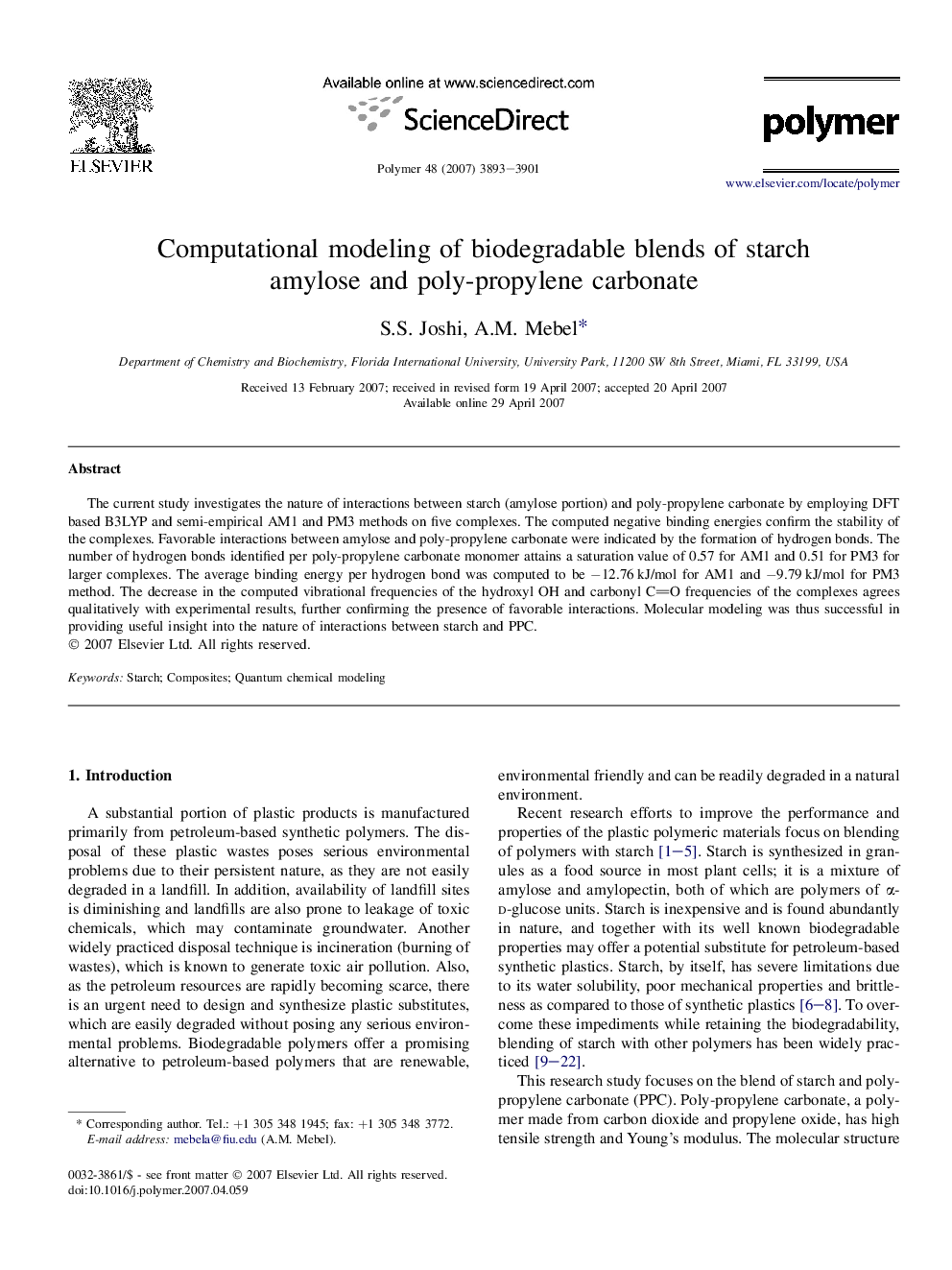| Article ID | Journal | Published Year | Pages | File Type |
|---|---|---|---|---|
| 5185960 | Polymer | 2007 | 9 Pages |
The current study investigates the nature of interactions between starch (amylose portion) and poly-propylene carbonate by employing DFT based B3LYP and semi-empirical AM1 and PM3 methods on five complexes. The computed negative binding energies confirm the stability of the complexes. Favorable interactions between amylose and poly-propylene carbonate were indicated by the formation of hydrogen bonds. The number of hydrogen bonds identified per poly-propylene carbonate monomer attains a saturation value of 0.57 for AM1 and 0.51 for PM3 for larger complexes. The average binding energy per hydrogen bond was computed to be â12.76Â kJ/mol for AM1 and â9.79Â kJ/mol for PM3 method. The decrease in the computed vibrational frequencies of the hydroxyl OH and carbonyl CO frequencies of the complexes agrees qualitatively with experimental results, further confirming the presence of favorable interactions. Molecular modeling was thus successful in providing useful insight into the nature of interactions between starch and PPC.
